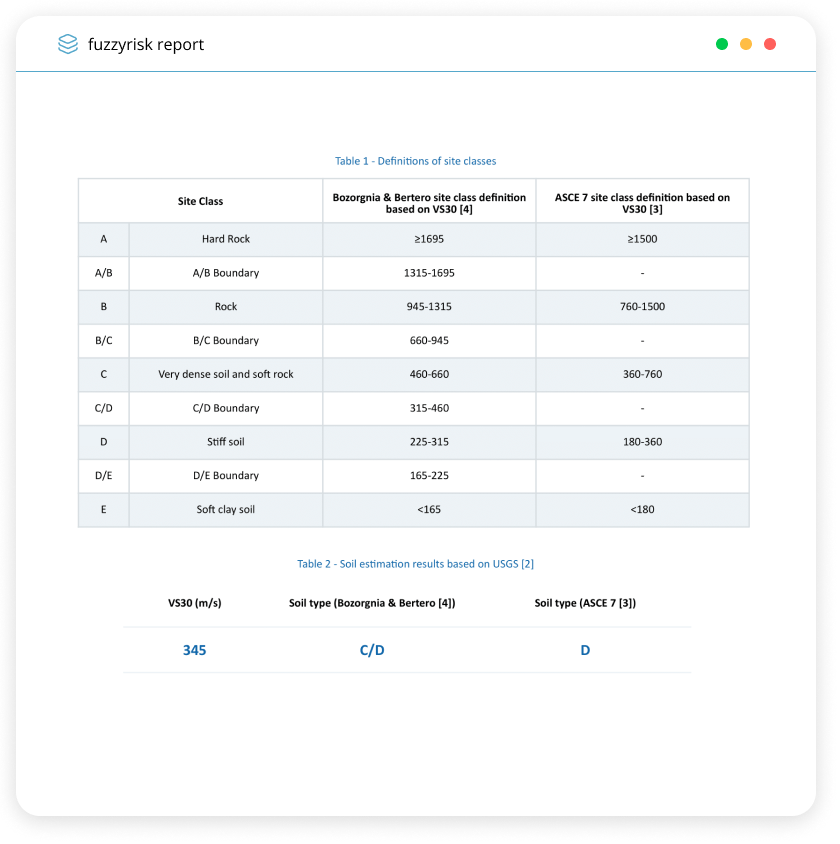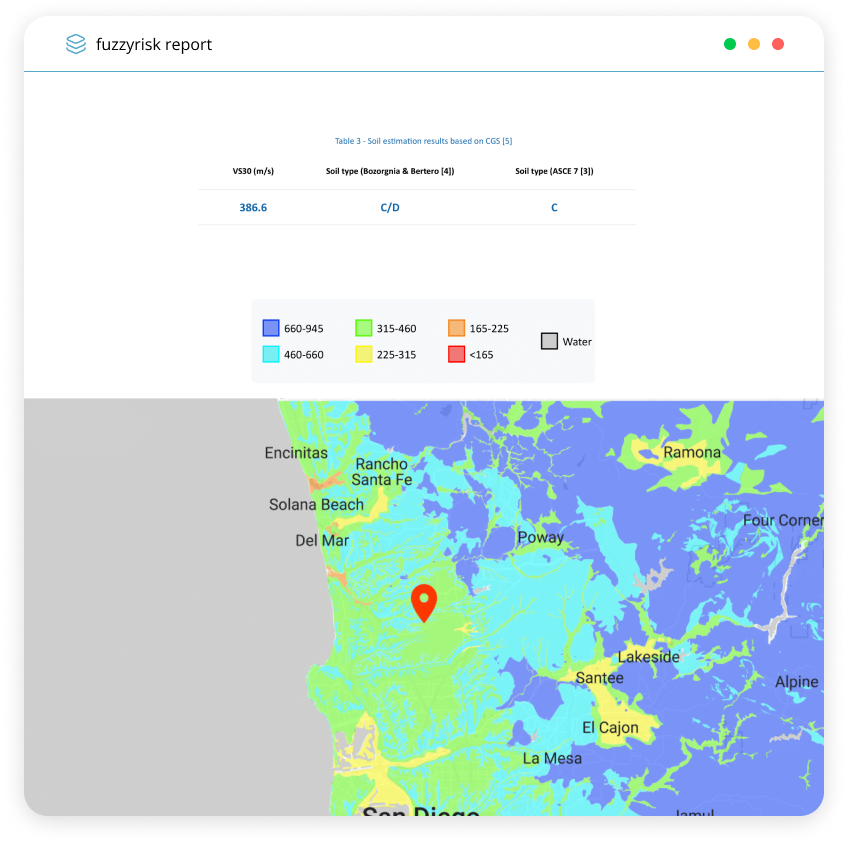Soil Characteristics:
Response of a building under a certain earthquake can significantly vary based on the site soil condition. We gathered shear-wave-velocity of upper soil levels (Vs30) from three different sources along with two soil type classifications to estimate the soil type classification at your site location.


































